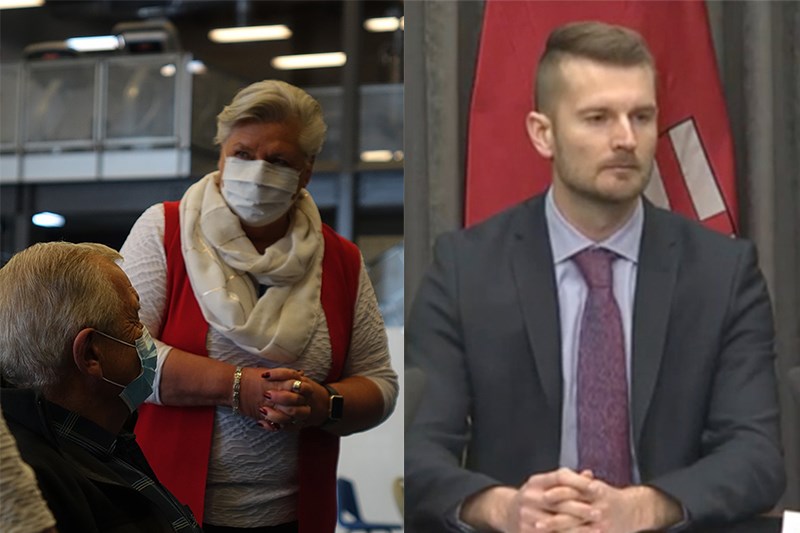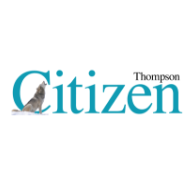With the COVID-19 pandemic in Manitoba having stretched to over a year as of March 12, the anniversary of the first presumptive positive test for the virus in the province, northern health care leaders say they can see a light at the end of the tunnel and have learned lessons that will aid in preparation for future disease responses.
One of those lessons is that, with a communicable disease like COVID, some of the most basic treatments are the most effective because they can help people avoid getting sick and requiring professional medical care.
“Now the whole world knows that if you wear a mask, if you stay some distance from each other and if you wash your hands not only will you not get COVID but you won't even get the flu,” said Northern Regional Health Authority (NRHA) CEO Helga Bryant in a March 12 interview with the Thompson Citizen, referencing the fact that during the pandemic, there was essentially no flu season, which came as a relief to health care planners, who had been concerned early on that the pandemic and seasonal flu could combine to put even more strain on the province’s health care system than COVID-19 itself did. “Something as simple as those three things did so much to keep people safe.”
That focus on prevention resulted in the province managing to cope with the number of serious and severe cases it did, though the number of intensive care unit (ICU) beds had to be increased and more than 900 Manitobans died as a result of their infections.
“We have lots of technology if they need to end up in an ICU but let’s not have that happen,” said Bryant. “We can prevent them from needing to be in an ICU. We can do that with a communicable disease like COVID. We can’t do it with the trauma or potentially some of the other reasons that people end up in critical care but a communicable disease is preventable and that’s another great learning and focus that COVID has shone a light on in the last year.”
For the most part, said NRHA medical officer of health Dr. Michael Isaac, combatting COVID-19 relied on non-pharmaceutical interventions until vaccines were developed.
“For that first year we relied on public health measures to try and decrease transmission of the virus,” he said. “There was nothing really early on from a pharmaceutical standpoint that we could rely on so we really needed to rely on the measures put in place at schools and workplaces and businesses.”
Though plans for such situations have long been around and included many of the measures that have been put in place over the past year, living through a global pandemic highlighted the importance of safe spaces for infected people to limit virus transmission.
“The one thing we didn’t really realize that was so evident with COVID-19 was the need to quarantine and the need to self-isolate and to have alternate places so people could do that because they may not be in a home living situation where they could do that safely on their own," said Bryant. "In all my years of being involved in that kind of planning that was something that we didn’t really contemplate. We all think of quarantine as being an old term, something that happened 100 years ago or 50 years ago but here we found ourselves in 2020 and 2021 needing to ramp up alternate isolation and to really be clear with the public about what it means to self-isolate, what it means to be a contact and what that might mean for self-isolation. I don’t think it broadsided us because we saw it coming but it was something that we certainly will be building into future plans. That’s one thing that we really sort of had to adapt and pivot very quickly on getting organized.”
The past year showed that the health care system, despite consisting of numerous large and complicated organizations, does have the ability to be nimble and to adjust to rapidly changing circumstances.
“Certainly the public health team has really had to readjust the way that we do business and to ensure that we have the capacity to follow up on cases,” said Isaac, noting the many new tasks that had to be taken on, like organizing a testing site, redesigning hospital procedures to ensure that COVID patients and those with other issues were safely separated and, now, getting vaccination sites and pop-up clinics running. “Some of those things over the past year are some of the major changes here.”
While the NRHA doesn’t have capacity to handle a large influx of patients requiring hospitalization or to provide round-the-clock intensive care, many non-critical cases were accommodated within hospitals in Thompson and The Pas. Bryant recalled one day when there were 15 northerners receiving non-critical care and half-a-dozen of them were in the region.
“We haven’t sent every COVID-positive patient that needed hospitalization to Winnipeg by any means,” she said. “We successfully cared for many COVID-positive patients over the course of the last year in our own hospitals.”
Bryant also highlighted the north’s success in avoiding the sort of catastrophic outbreaks that afflicted personal care homes (PCHs) down south.
‘”We got proactive measures into those personal care homes the second we had either a positive staff, which was primarily the case, the odd time a positive resident,” she said. “We came out of PCH outbreaks pretty much unscathed and I’m just so proud of the leadership of both the First Nations personal care homes as well as ours. We really did protect the oldest and very vulnerable in our care.”
With high case numbers continuing in the NRHA – there were 236 confirmed cases of the virus in the region from March 10 to March 15 – the pandemic is far from over, but Isaac says it should start looking somewhat different than it has at times in the past year within the next few months.
“We still have work to do around what I would call outbreak response,” Isaac said. “We’re still seeing outbreaks in certain communities so we have to keep focused on that. We have a range of interventions and outbreak response measures that go into place after an outbreak is identified so we will continue to have to do that in the coming weeks. Our risk of having an outbreak in the coming months is going to go down as we obviously get more vaccine out and start to really push towards getting herd immunity in our population.”
While the global COVID pandemic is often called unprecedented due to its scope, last seen during the 1918 flu pandemic that killed millions around the world, the fact that pharmaceutical companies have developed not just one but several effective vaccines within the space of a year is similarly novel.
“We have the vaccine which is really an unprecedented intervention that we have available to us now here in a year,” Isaac said. “It’s never been done before in human history and I think there’s a lot of optimism around the number of vaccines that we have.”
Immunity, however, is not invincibility. As of March 15, about eight per cent of Manitobans had received at least one dose of COVID vaccine and it could be some time before younger healthy people start becoming eligible recipients.
“The variants of concern that we’re going to need to keep an eye on … will not allow us to get away from those fundamentals,” Isaac said. “We’ll need to continue to use those fundamentals here in the coming months but there’s certainly a light at the end of the tunnel here with our vaccines.”
Bryant says the example of the past year shows that Northern Manitoba health care is capable of adjusting to what comes next as the need arises.
“We had to stop doing some things so that we could do new things. In some instances, we just did double of things. We maximized technology. We continued as many services as we could and we did that in a virtual way. We moved some of those things forward, those goalposts that we had around wanting to improve access to care virtually. We moved that five years forward at least last year and COVID was a real catalyst to do that. We wold not have done that this quick without COVID.”
Though busy and intense, the NRHA CEO says the past year has also been one of the most rewarding periods in her health care career, which started when she became a registered nurse 47 years ago.
“In spite of all the challenges of the year … it has been a privilege. It’s been an honour to serve the public. We’ve been energized. We’ve worked hard, we’ve worked long. There have been absolutely aspects of it that have been very rewarding.”
Like many others, however, Bryant looks forward to a time when social distancing and limited gatherings are no longer needed.
“I am really missing my children and grandchildren,” she said. “I can’t wait for the day to be able to hug them. I think all of us are feeling that isolation is wearing a bit thin but if we just hang in there a little bit longer we will be able to do that safely and know that we’re not putting anybody at risk.”




